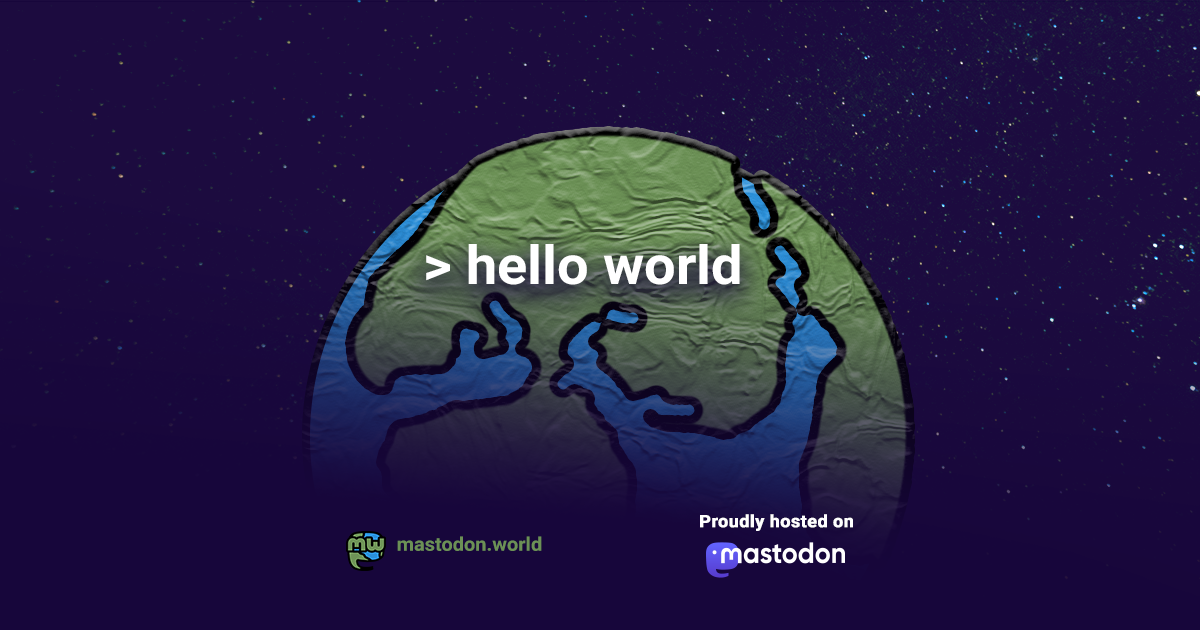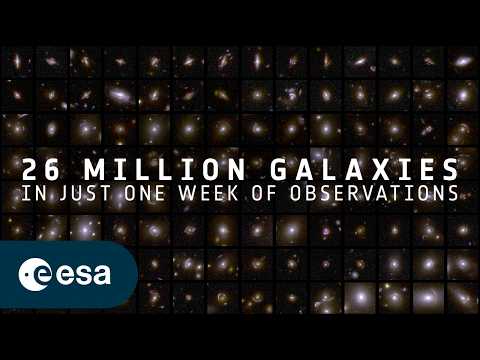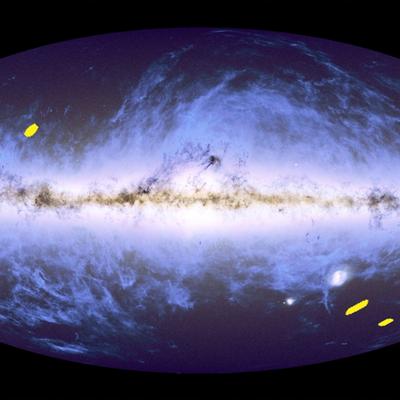
Recent searches
Search options
#euclid

I only just realised that the classic AD&D dice are the 5 Platonic solids, four of which which, according to him, represent the four classical elements plus (say some) the fifth element of ether / spirit /dynamic life force.
It's paper day for the completed #ESO Kilo-Degree Survey. We end our journey with a consistent picture of #cosmology
I've been co-leading KiDS for 12yrs & I'm so proud of what the team's achieved. If you're at the #Euclid meet, go to Angus Wright's talk @10am today!
: arxiv.org/pdf/2503.19441
New entry of AI-generated #comics and #jokes added to our #website:
comics.lucentinian.com/6166
#FunnyNews #LaughWithAI #Jokes #AIComedy #NewsLaughs
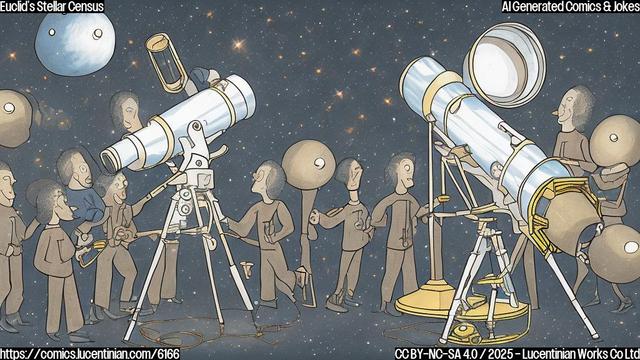
#KnowledgeByte: The #Dark #Universe is the part of the universe that is not directly observable, including dark energy and dark matter.
There are several launched and planned missions to know more about the Dark Universe. #ESA #Euclid mission is probably the most prominent of these.
https://knowledgezone.co.in/posts/Search-for-the-Dark-Universe-65ffc003e60d1c294acac2bb
La semaine dernière, les premières publications scientifiques du télescope spatial européen #Euclid ont été publiées.
Plongez dans les champs profonds : https://reves-d-espace.com/le-telescope-europeen-euclid-devoile-quelques-resultats-preliminaires-de-ses-observations-les-champs-profonds/
Oh my... it's full of Galaxies!
Video zoom animation of the Deep Field South taken by ESA Euclid Space Telescope
Full size: https://flic.kr/p/2qTEFJk
Zoomable image & more info: https://flic.kr/p/2qTFE4L
Credit: ESA/Euclid/EuclidConsortium/NASA/AndreaLuck CC BY
Latest data release available on: https://eas.esac.esa.int/sas
Filters: VIS, NIR H, NIR J, NIR Y
Cette semaine, les premières publications scientifiques du télescope spatial européen #Euclid ont été publiées.
Plongez dans les champs profonds : https://reves-d-espace.com/le-telescope-europeen-euclid-devoile-quelques-resultats-preliminaires-de-ses-observations-les-champs-profonds/
#DLR:
"
Die Jagd nach Dunkler Materie
Mission Euclid gibt neuartige Einblicke in Tiefen des Weltalls
"
".. Sonde .. darauf spezialisiert, Himmelsbereiche gleichzeitig zu beobachten, die mehr als hundertmal größer sind als das, was bisherige Teleskope leisten konnten."
19.3.2005
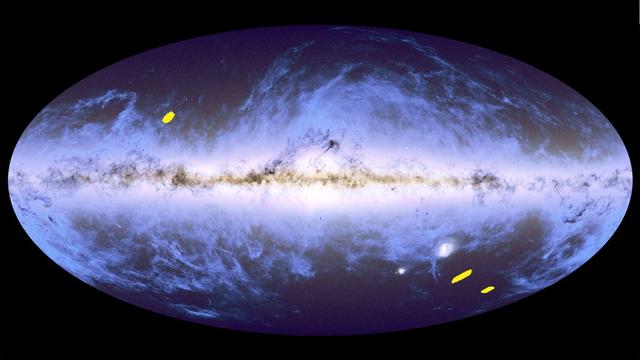
Cat's Eye Nebula NGC 6543 as seen by ESA Euclid Space Telescope
Full size 3K & full info: https://flic.kr/p/2qTiGsj
Credit: ESA/Euclid/EuclidConsortium/NASA/NAOJ/AndreaLuck CC BY
Latest data release available on: https//eas.esac.esa.int/sas
Mission: ESA Euclid
Instruments: VIS and NIS
Product Type: MER Mosaic
Release Q1 R1
Filters: HSC G (Subaru Telescope), VIS, NIR H, NIR J, NIR Y
"Hi, I'm Larry, and this is my brother Darryl and my other brother Darryl."
#astronomy #Euclid
sky.esa.int/esasky/?target=54.034929795063086%20-27.896310906596824&hips=Q1-EDFF-R4-PNG-RGB&fov=0.049145094599052155&projection=TAN&cooframe=J2000&sci=true&lang=en&layout=esasky
Browsing through the #Euclid deep fields, and this struck my eye. Those look like some pretty impressive tidal tails!
#astronomy
sky.esa.int/esasky/?target=54.77847519086859%20-28.910797309472358&hips=Q1-EDFF-R4-PNG-RGB&fov=0.1710058177259188&projection=TAN&cooframe=J2000&sci=false&lang=en&layout=esasky&euclid_image=EDFF
Der Quick Release 1 des #Euclid-Satelliten - die ersten 63 von am Ende 14.000 Quadratgrad des Himmels - ist da: Das Video https://www.youtube.com/watch?v=rXCBFlIpvfQ taucht in die gigantische Himmelsdurchmusterung ein, und in https://skyweek.wordpress.com/2025/03/20/63-quadratgrad-30-mio-objekte-euclids-teaser gibt es ausgewählte Bilder, Hintergründe und viele Links. Richtig ernst wird es dann Ende 2026 mit dem Data Release 1, der 1900 Quadratgrad und die ersten fundamentalen kosmologischen Schlussfolgerungen verspricht, um die es bei dem ESA-Projekt geht.
(19 Mar) Euclid’s First Big Data Drop Maps 26 Million Galaxies to Illuminate the Dark Cosmos
The mission’s first large set of survey data is a treasure trove for clues about the history of the universe.
https://s.faithcollapsing.com/v43lu
Archive: ais: https://archive.md/wip/lxcfu ia: https://s.faithcollapsing.com/6fnm0
[14:54] Data miljoenen sterrenstelsels bewaard in Groningen. Hoeveelheid staat gelijk aan ‘honderd jaar lang 24 uur per dag speelfilms streamen’
Bij de eerste scans van het heelal heeft ruimtetelescoop Euclid maar liefst 26 miljoen sterrenstelsels in kaart gebracht. De gigantische hoeveelheid data die hierbij is vergaard wordt opgeslagen in een datacenter hier in Groningen.
https://dvhn.nl/groningen/Data-miljoenen-sterrenstelsels-bewaard-in-Groningen-45917650.html
#eerste #Euclid #26miljoen #Groningen

"Dark energy is the name given to the cause of the accelerating expansion of the universe. This acceleration, discovered in the late 1990s, won the Nobel Prize in Physics. It came as a great surprise: 𝗮𝘁 𝘁𝗵𝗲 𝘀𝗰𝗮𝗹𝗲 𝗼𝗳 𝘁𝗵𝗲 𝘂𝗻𝗶𝘃𝗲𝗿𝘀𝗲, 𝘁𝗵𝗲 𝗴𝗿𝗮𝘃𝗶𝘁𝗮𝘁𝗶𝗼𝗻𝗮𝗹 𝗳𝗼𝗿𝗰𝗲 𝗺𝗮𝗻𝗶𝗳𝗲𝘀𝘁𝘀 𝗶𝘁𝘀𝗲𝗹𝗳 𝗮𝘀 𝗮 𝗿𝗲𝗽𝘂𝗹𝘀𝗶𝘃𝗲 𝗿𝗮𝘁𝗵𝗲𝗿 𝘁𝗵𝗮𝗻 𝗮𝗻 𝗮𝘁𝘁𝗿𝗮𝗰𝘁𝗶𝘃𝗲 𝗳𝗼𝗿𝗰𝗲!
#Euclid has exactly what it takes to respond unambiguously to [the possibility the “cosmological constant” could vary over time]."
https://www.irap.omp.eu/en/2025/03/euclid-telescope-reports-first-results/
[Zoom on the #CosmicWeb] Have you dived into the deep fields of #Euclid revealed this Wednesday by the @ec_euclid ? Have you navigated between the thousands of #galaxies of different shapes, sizes, colors and masses? So many objects, near and far, fill our #Universe! https://sky.esa.int/esasky/?hide_welcome=true&hide_banner_info=true&hips=DES-DR2+ColorIRG&sci=false&layout=esasky&euclid_image=EDFS
What if their spatial distribution could tell us something about two mysterious components : #DarkMatter and #DarkEnergy? This is the gamble taken by the scientists involved in the Euclid mission. To do so, they've designed some unrivalled #instruments: a camera with great depth of field and high resolution records the variety of shapes and spatial distribution of galaxies, while a #spectrometer coupled with a #photometer can determine the distances and masses of galaxies ...
Alain Blanchard, professor at the University of Toulouse and researcher at IRAP, comments on the consortium's first-ever publication of scientific data: https://www.irap.omp.eu/en/2025/03/euclid-telescope-reports-first-results/
[Zoom sur la #ToileCosmique] Avez-vous plongé dans les champs profonds d' #Euclid révélés ce mercredi par le @ec_euclid ? Avez-vous navigué entre ces milliers de #galaxies de formes, de dimensions, de couleurs, de masses différentes ? Tant d'objets proches et lointains tapissent notre #Univers ! https://sky.esa.int/esasky/?hide_welcome=true&hide_banner_info=true&hips=DES-DR2+ColorIRG&sci=false&layout=esasky&euclid_image=EDFS
Et si leur distribution spatiale nous renseignait sur ces deux composantes mystère que sont la #MatièreNoire et l' #EnergieNoire ? C'est le pari qu'ont fait les scientifiques impliqués dans la mission Euclid. Pour ce faire, il ont conçus des #instruments hors pair : un appareil photo doté d'une grande profondeur de champ et d'une résolution élevée enregistre la variété de formes ainsi que la distribution spatiale des galaxies, tandis qu'un #spectromètre doublé d'un #photomètre permet de déterminer les distances ainsi que les masses des galaxies ...
Alain Blanchard, professeur à l'Université de Toulouse et chercheur à l'IRAP, commente la toute première publication de données scientifiques par le consortium : https://www.irap.omp.eu/2025/03/le-telescope-euclid-rapporte-ses-premiers-resultats/
Es gibt wieder etwas zu gucken.
New science results and exclusive data from the #Euclid space telescope https://www.euclid-ec.org/public/press-releases/euclid-quick-data-release-1/ und
Euclid opens data treasure trove, offers glimpse of deep fields https://www.esa.int/Science_Exploration/Space_Science/Euclid/Euclid_opens_data_treasure_trove_offers_glimpse_of_deep_fields

